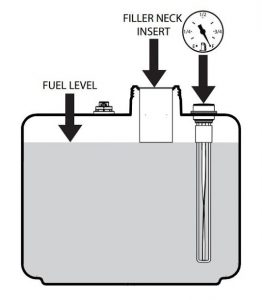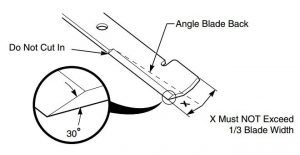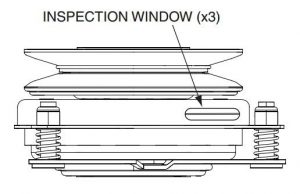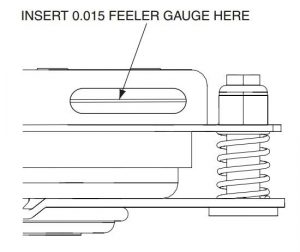How to Guide
How do I fill the mower’s fuel tank?
Make sure to use only clean unleaded fuel with a lowest octane rating of at least 87 and a highest rating of 10% ethanol. Always practice extreme caution when handling gasoline due its highly flammable nature.
- Put out any other ignition sources such as cigarettes, cigars etc.
- Ensure that you only use an dealer approved fuel container.
- Do not take out the gas cap or add additional fuel before turning off the engine. Wait for the engine to completely cool down also before you add fuel.
- Do not fill fuel in the mower when indoors or when in an enclosed space.
- Do not store the mower or fuel tank near flammable materials or an open flame, spark or other appliances such as water heaters.
- Refrain from filling the containers inside a vehicle or when fixated on a truck or trailer – especially one with a plastic inner liner. Ensure that you place containers on the ground a safe distance away from the vehicle before filling the tank.
- Take out the machine from the truck and refuel it when on a level surface. If this isn’t a possibility, refuel the machine using a movable tank or container, instead of a traditional petroleum dispensing nozzle.
- Make sure that the tip of the nozzle in always in contact with the rim of your mower’s fuel tank or container opening for the entire duration of fueling. Avoid using nozzle lock-open type devices.
- If you accidentally spill fuel on your clothing, ensure that you immediately change clothing and wash affected area of skin.
- Tighten the gas nozzle top securely when replacing the cap. In the case of low emission (LE) or EPA Phase 3 variants, keep tightening the fuel cap until it makes a ratcheting sound

How do I replace and sharpen the cutting blades?
- Before attempting to service the blades, ensure that you remove the ignition key
- Inspect the cutting blades for their sharpness. If any of the blades appear to look bent or dull, it may be necessary to replace or sharpen them accordingly.
- Inspect for wear. If the cutting blade has been worn out to over 1/2 of its original thickness, it may be necessary to replace the cutting blade with a fresh one.
- Inspect the other cutting blades for dents or gouges. As with the previous step, too many gouges on the top surface or at the bottom of the blade is a sign that the blade needs replacement.
- A nicked or brushed blade will need to be sharpened. Take out the blades to sharpen it.
- Ensure that you sharpen the cutting edge of the blade to the same bevel as the original condition.
- Balance the blade in order to check its stability and make sure that its well-balanced before you refasten it to the mower’s deck

How to adjust the custom-cut baffle height?
The Scag mower’s cutting height can be raised or lowered precisely in order to deliver the perfectly tailored cut optimal for the trim you’re trying to achieve and this can be set in seven different positions for best performance.
- Set the cutting deck into the transporting position.
- take out the hardware that secures the Custom-Cut Baffle onto the mower’s cutting deck.
- Shift the Custom-Cut Baffle to your desired setting.
- Fasten the mounting hardware and torque it to around 39 ft-lbs.
How do I check engine oil and when should I replace the oil?
The level of your Scag mower’s engine oil level should be routinely checked after at least every 8 hours of operation or daily – refer to the owner’s manual for specific instructions.
The engine crankcase’s oil needs to be replaced without fail along with the oil filter after the first 20 hours of usage. After this, the engine oil can be replaced after about once in every 100 hours of usage or once in two-weeks, whichever comes first.
How do I clean and replace the engine’s air cleaner?
As with any mower’s engine air filter, service periods are determined by the conditions of the operating environment. Ensure that your inspect and clear out the air cleaner’s inner and outer element after every 100 hours of usage or once in two weeks. If the filter becomes substantially dirty, proceed to replace it with a new one.
- Take out the air cleaner’s covering and keep it aside.
- take off the air filter and inspect it.
- Clear thoroughly and debris and replace the filter as well as the foam pre-cleaner – refer to the engine’s manual for specific instructions.
- Secure the air cleaner with its cover on cleaning or replacing.
How do I adjust the electric clutch?
The electric clutch has two primary functions in the mower’s operation. In addition to starting and stopping power flow to the cutting blades, the electric clutch is also basically a braking system that can assist in stopping the blade’s rotation while the PTO has been switched off. This also comes in handy if the operator presence circuit has been interrupted.

After the clutch is deactivated, adjust the air gap between the armature and rotor to about 0.015’’ – this allows for optimal operation. This adjustment can be made using the three bolts on the clutch. There are also three windows for inspection next to each of the corresponding bolts.

- Locate each of the corresponding inspection windows on the clutch.
- Insert the 0.015 feeler gauge within the slot in between the armature and the rotor components.
- You can then get the 0.015 inch airgap by tightening or loosening the adjusting bolts as required. Remember to repeat this operation at each of the three corresponding inspection windows.
This adjustment has to be made after operating the mower every 500 hours, or once a year – whichever comes first.
How to take care of my mower?
You should wash the mower after every use. Avoid using high pressure sprays or directing the spray onto the machine’s electrical components. Never wash the engine when it is hot or running. Cold water application will also damage the mower’s engine. The safest method is to use compressed air in order to clean the engine when hot. Also keep the entire mower tidy in order to inhibit heat damage to the engine’s parts and the hydraulic oil circuit system. Check the drive belt assembly for proper, tight alignment and inspect for any signs of wear.
After waiting for the mower to cool down, fill the fuel tank with fresh, clean gasoline after every day of mowing.
How to operate my mowers so that it moves forward?
To travel in the forward direction, first ensure that you select the desired engine speed using the transmission shift lever, and maintain neutral steering by adjusting the pull steering and brake control levers by moving them upwards. Now release the neutral latch on both the sides and gradually release both the left as well as the right steering and brake control levers.
The higher the gear that you select with the transmission shifting lever, the faster you enable the mower to travel. In order to stop the forward motion, just pull the steering and brake control levers in the upward direction and then lock the neutral latches After this, shift the transmission back to the neutral setting. You can also steer the mower left or right while moving forward by pulling the left or the right steering and brake control lever upwards.
Pulling the lever further and further upwards will initiate tighter turning.
How to operate my mowers so that it moves forward?
To travel in the reverse direction, shift the transmission to the reverse gear with the shifting lever and then pull both the steering and brake control levers in the upward direction. Now release the neutral latches for both the sides and then release both steering and brake control levers slowly. Travel speed must be low when traveling in the reverse direction.
To steer in either direction when traveling in reverse, you can pull the left steering and brake control levers in the upward direction. Just as with steering the forward direction, pulling the lever further with initiate tighter steering.